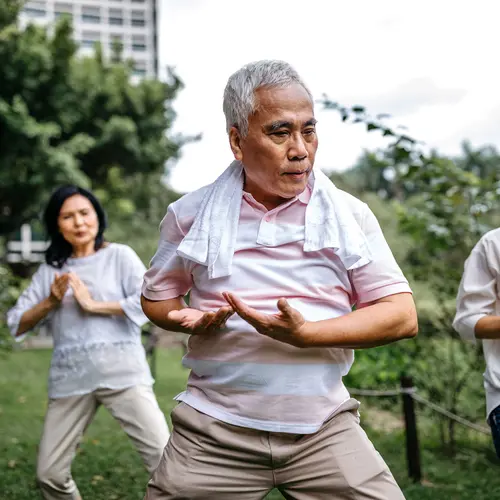Thai massage is a form of therapeutic touch that differs in many ways from traditional massage. Instead of a massage table, you lie on a mat on the floor while the provider manipulates your body in certain ways to stimulate organs and improve flexibility.
Thai massage is part of traditional Thai medicine. Similar to Chinese medicine, it works with the body's energetic pathways. These are also called sen.
Other Names for Thai Massage
In the Thai language, the name for Thai massage is Nuad bo-rarn. Nuad means "massage." Bo-rarn means "ancient." So in Thailand, it is an ancient massage. Some also translate it as "ancient healing way."
The History of Thai Massage
Much of the history of Thai massage is a mystery. Many records about it have been destroyed over time. It's possible that the tradition of Thai massage was primarily passed down orally for centuries."
Many historians agree that it started at least 2,500 years ago. They attribute its start to an Indian doctor, Shivago Komarpaj, also called Jivaka Buccha Komar. He is known throughout Asia as "Father Doctor."
Shivago Komarpaj was a colleague of the Buddha. He helped to spread traditional medicinal practices throughout southern Asia. Over the years, with foreign influences, Thai massage has developed into a popular holistic health tradition that includes aspects of yoga, Ayurveda, and Chinese medicine.
How Is Thai Massage Different From Other Forms of Massage?
In most forms of massage, the practitioner uses their hands and sometimes other objects to relax and manipulate your muscles. You lie on a massage table, switching between face-down and face-up. In Thai massage, however, you lie on a mat on the floor.
You can leave your clothes on for a Thai massage. It's important to wear comfortable, loose-fitting clothing that is easy to move in. With other forms of massage, you typically remove all or most of your clothing.
Thai massage practitioners move your limbs around to stretch joints and gently massage key areas of the body according to traditional Thai medicinal theory.
The Benefits of Thai Massage
Increased range of motion. Thai massage combines compression, acupressure, and passive stretching. These increase the range of motion in your joints and muscles. This can also improve your posture.
Helps with back pain. Thai massage tends to focus on areas that can contribute to back pain, like the inner thigh and abdomen. However, if you have constant back pain, it’s best to visit a doctor before getting any type of massage.
Reduces headache intensity. One study showed that nine sessions of traditional Thai massage in a 3-week period can reduce painful headaches in people who have chronic tension headaches or migraines.
Lowers stress. In another study, researchers showed that Thai massage reduced stress, especially when combined with plenty of rest.
Helps stroke patients. A 2012 study suggested that stroke patients who get Thai massage regularly may be better able to recover the ability to do daily activities. They may also have lower pain levels and sleep better.
Other benefits of Thai massage may include:
- Better sleep
- Better relaxation
- Improved digestion
- Calm mind or increased mindfulness
Risks of Thai Massage
There are a few potential risks of Thai massage, just like any form of massage. It may cause changes in your heart rate. This could be harmful if you have a heart condition. There is also a small risk of injury to muscles or bones from a rough massage.
However, for most people, Thai massage is not only harmless, it can be helpful. Be sure to visit a licensed practitioner to lower the risk of injury from a Thai massage.
Each state has different requirements, but most want a minimum of 500 hours of training for someone to become a licensed massage therapist. This shows that they have the knowledge to safely help you feel better and improve your overall well-being.

